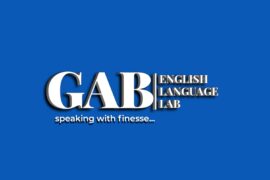The dictionary with regard to every word provides some information on the following:
1. Spelling: A dictionary gives the proper spelling of a word in the main entry. Some dictionaries also go further to give variant spellings(I.e, AmE/BrE). Hence, dictionary helps confirm the right spelling of words.
2. Syllabification: The main entry of a dictionary gives the appropriate division of a word. That is, the dictionary indicates the syllable boundaries with dots in-between syllables. This further gives you a hint as to where to cut a word at the end of a line during writing or typing.
3. Pronunciation: Just after the main entry, the right pronunciation is indicated in-between diagonal slashes with the accent os stress pattern. The primary stress mark(‘) always appears before the syllable that is louder(I.e, two syllable word) or loudest(I.e, polysyllabic word)
4. Word Class: The dictionary usually provides labels that will indicate the word classes of a word. A particular word can have various usues, i.e, adjective(adj.) adverb(adv.), verb(v.) And noun(n.). The word class label is thus abbreviated and sometimes put in bracket.
5. Inflected form: Dictionaries also give the inflected forms of words. In other words, a dictionary can list ways in which noun, verb, or adjective changes form to indicate number, tense, comparison or superlative form.
6. Etymology: The etymology of a word has to do with its history or origin. This label shows whether the words existed in the Old English(OE), Middle English(ME), or was borrowed from another language such as French, Latin, Greek, etc.
7. Definitions: A dictionary also supplies the meaning of a word. Such definition is always in form of synonymous explanation. The meaning is most often than not denotative. The practice is that the most common or general meaning comes first while the restricted meanings follow thereafter.
8. Usage: This is the label that indicates how a word is used in the language.
9. Idioms: Dictionaries usually list common idioms associated with words.
10. Synonyms and Antonyms: A dictionary also provides information on words that are similar in meaning and oppsosite in meaning to the word being discussed.
Have a great week!


3 Comments
Wow!!!Thank you…Have a great week too!
God bless and increase your knowledge sir. Thank you
sincerely, I could sense your voice in your write-up…..but sir, how can I distinguish symbolism from imagery? Khalid@successpoint